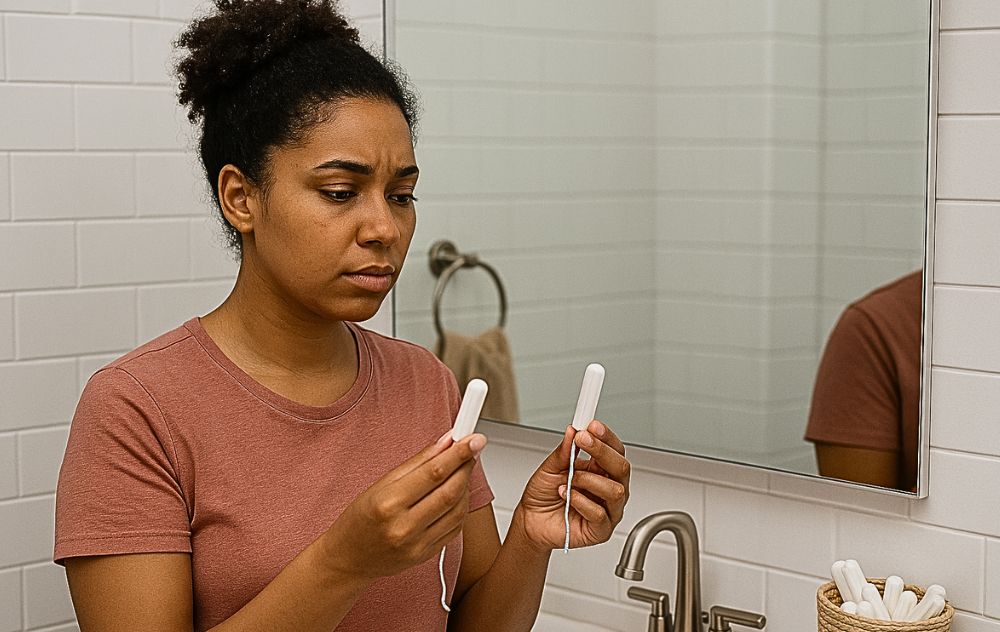
Spotting or light bleeding outside of your expected period can be unsettling—but it’s more common than many realize. Known as mid-cycle bleeding, this symptom can have a range of causes, from hormonal fluctuations to underlying health conditions.
What Is Mid-Cycle Bleeding?
Mid-cycle bleeding refers to vaginal bleeding or spotting that occurs between menstrual periods, typically around ovulation—which is usually two weeks before your next period.
It may appear as:
- Light spotting (pink or brown discharge)
- Short episodes of bleeding that don’t require a pad or tampon
- Bleeding that lasts a few hours to a couple of days
Is It Normal to Bleed Mid-Cycle?
Occasional light spotting around ovulation can be normal, especially if it happens consistently and is not accompanied by pain. However, if mid-cycle bleeding is new, heavy, or recurring, it could indicate an underlying issue that needs medical attention.
Read More About Bleeding Between Periods
Common Causes of Mid-Cycle Bleeding
There are several possible reasons for bleeding between periods:
1. Ovulation
A small percentage of people naturally spot when an egg is released due to a temporary dip in estrogen.
2. Hormonal Imbalances
Fluctuating estrogen or progesterone levels—often caused by stress, thyroid disorders, or hormonal contraceptives—can disrupt your cycle and trigger spotting.
3. Birth Control Adjustments
New or changing birth control methods (pills, patches, IUDs) may cause breakthrough bleeding, especially during the first few months.
4. Uterine Fibroids: A Common Yet Overlooked Cause
One of the most commonly overlooked causes of mid-cycle bleeding is uterine fibroids—noncancerous growths that develop in or around the uterus. Despite being incredibly common (affecting up to 70–80% of women by age 50), fibroids often go undiagnosed, especially when the symptoms are subtle or mistaken for normal menstrual changes. Fibroids can vary greatly in size and location, and their symptoms depend on where they grow. Those located within the uterine lining (submucosal fibroids) are most likely to cause irregular bleeding, including spotting between periods, heavy menstrual bleeding, and prolonged cycles. Some women with fibroids also experience pelvic pain, bloating, frequent urination, or discomfort during sex. However, because fibroid symptoms overlap with many other reproductive health issues, they are frequently dismissed or attributed to hormonal changes, birth control side effects, or simply “normal” periods. If you’re consistently experiencing mid-cycle bleeding—especially if it’s accompanied by other signs like fatigue, pelvic pressure, or heavy flow—it’s important to consider fibroids as a potential cause. Early detection matters, and modern, minimally invasive treatments like Uterine Fibroid Embolization (UFE) can help relieve symptoms without surgery or long recovery times.
5. Polyps or Endometriosis
These growths or conditions can affect the uterine lining and cause bleeding at any time of the month.
6. Infections or STIs
Infections like chlamydia or pelvic inflammatory disease can irritate the cervix and trigger unexpected bleeding.
7. Perimenopause
As estrogen fluctuates, women approaching menopause may experience erratic cycles, spotting, or skipped periods.
Diagnosing the Cause
To determine what’s causing mid-cycle bleeding, your provider may recommend:
- A pelvic exam
- Ultrasound imaging (to detect fibroids or polyps)
- Hormone level testing
- Pap smear or biopsy (if needed)
These tests help rule out serious conditions and guide appropriate treatment options based on your symptoms and health history.
Treating Mid-Cycle Bleeding
Treatment depends on the underlying cause. Options may include:
- Hormone therapy to regulate cycles
- Non-surgical procedures for fibroids, like Uterine Fibroid Embolization (UFE)
- Antibiotics for infection
- Switching or adjusting birth control
If fibroids are the culprit, UFE offers a non-surgical option that shrinks fibroids by cutting off their blood supply. It’s an outpatient procedure with minimal downtime and long-term relief for many women.
Could Mid-Cycle Bleeding Be Fibroids?
While the occasional mid-cycle spot may be harmless, recurrent bleeding between periods shouldn’t be ignored. Fibroids are one of the most underdiagnosed causes of irregular bleeding and can lead to larger health concerns if left untreated. To discuss your symptoms with one of our fibroid doctors, give us a call at 855-615-2555 and schedule your appointment.


